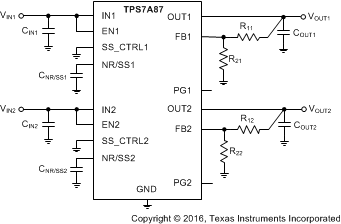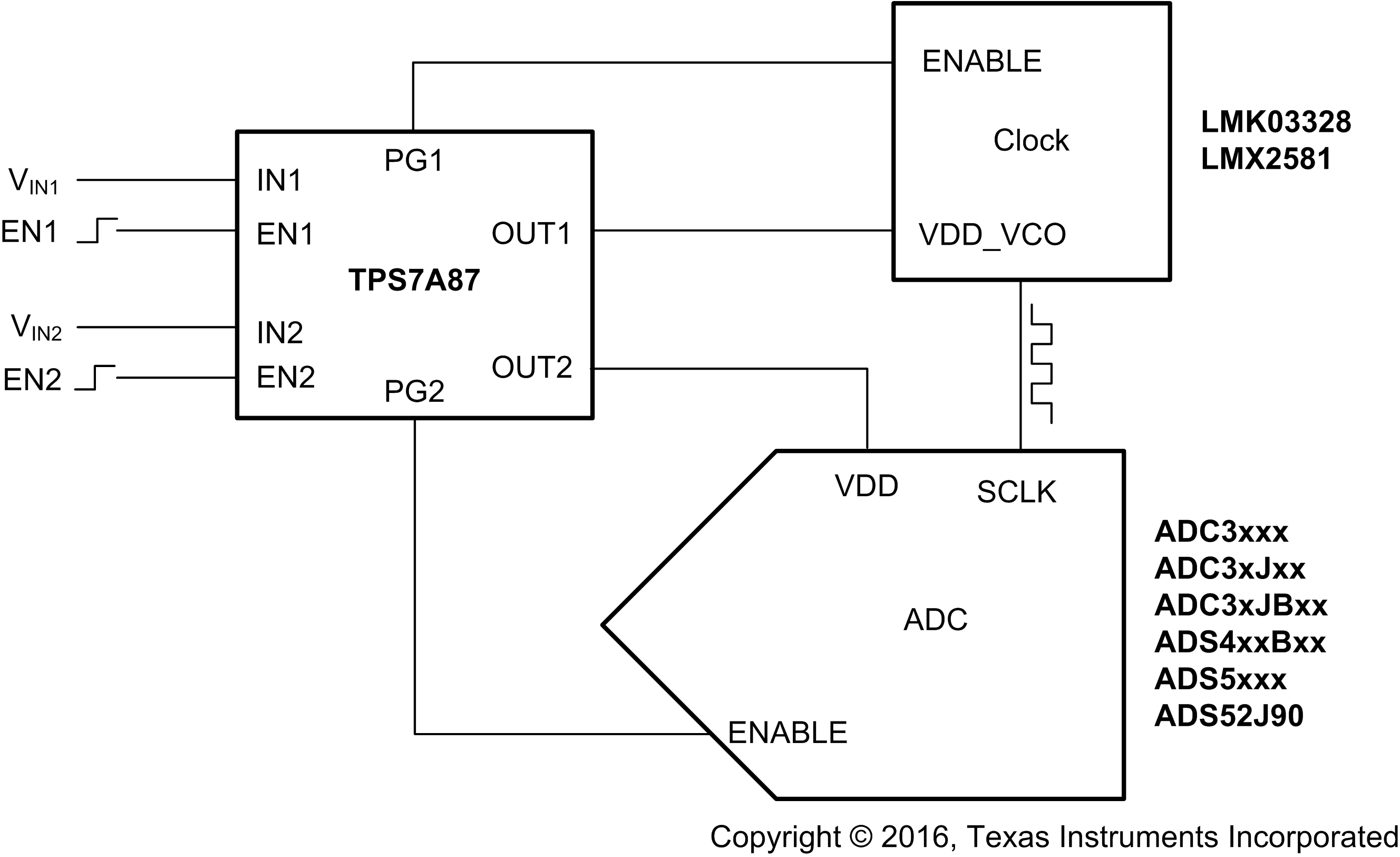SBVS281A March 2016 – July 2016 TPS7A87
PRODUCTION DATA.
- 1 Features
- 2 Applications
- 3 Description
- 4 Revision History
- 5 Pin Configuration and Functions
- 6 Specifications
- 7 Detailed Description
- 8 Application and Implementation
- 9 Power Supply Recommendations
- 10Layout
- 11Device and Documentation Support
- 12Mechanical, Packaging, and Orderable Information
Package Options
Refer to the PDF data sheet for device specific package drawings
Mechanical Data (Package|Pins)
- RTJ|20
Thermal pad, mechanical data (Package|Pins)
- RTJ|20
Orderable Information
1 Features
- Two Independent LDO Channels
- Low Output Noise: 3.8 µVRMS (10 Hz–100 kHz)
- Low Dropout: 100 mVMAX at 0.5 A
- Wide Input Voltage Range: 1.4 V to 6.5 V
- Wide Output Voltage Range: 0.8 V to 5.2 V
- High Power-Supply Ripple Rejection:
- 75 dB at DC
- 40 dB at 100 kHz
- 40 dB at 1 MHz
- 1.0% Accuracy Over Line, Load, and Temperature
- Excellent Load Transient Response
- Adjustable Start-Up In-Rush Control
- Selectable Soft-Start Charging Current
- Independent Open-Drain Power-Good (PGx) Outputs
- Stable with a 10 µF or Larger Ceramic Output Capacitor
- 4-mm × 4-mm, 20-Pin WQFN Package
2 Applications
- High-Speed Analog Circuits:
- VCOs, ADCs, DACs, LVDSs
- Imaging: CMOS Sensors, Video ASICs
- Test and Measurement
- Instrumentation and Medical
- Professional Audio
Typical Application Circuit

3 Description
The TPS7A87 is a dual, low-noise (3.8 µVRMS), low-dropout (LDO) voltage regulator capable of sourcing 500 mA per channel with only 100 mV of maximum dropout.
The TPS7A87 provides the flexibility of two independent LDOs and approximately 30% smaller solution size than two single-channel LDOs. Each output is adjustable with external resistors from 0.8 V to 5.2 V. The wide input-voltage range of the TPS7A87 supports operation as low as 1.4 V and up to 6.5 V.
With 1% output voltage accuracy (over line, load, and temperature) and soft-start capabilities to reduce in-rush current, the TPS7A87 is ideal for powering sensitive analog low-voltage devices [such as voltage-controlled oscillators (VCOs), analog-to-digital converters (ADCs), digital-to-analog converters (DACs), complementary metal oxide semiconductor (CMOS) sensors, and video application-specific integrated circuits (ASICs)].
The TPS7A87 is designed to power noise-sensitive components such as those found in instrumentation, medical, video, professional audio, test and measurement, and high-speed communication applications. The very low 3.8-µVRMS output noise and wideband PSRR (40 dB at 1 MHz) minimizes phase noise and clock jitter. These features maximize the performance of clocking devices, ADCs, and DACs.
Device Information(1)
| PART NUMBER | PACKAGE | BODY SIZE (NOM) |
|---|---|---|
| TPS7A87 | WQFN (20) | 4.00 mm × 4.00 mm |
- For all available packages, see the orderable addendum at the end of the datasheet.
Powering the Signal Chain
